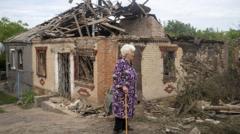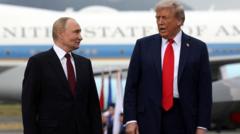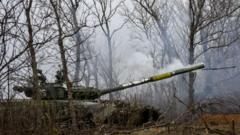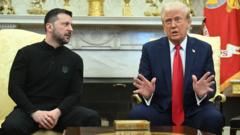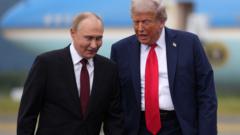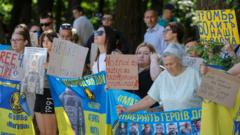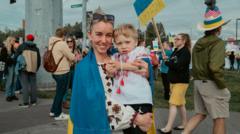Following a social media post by Donald Trump featuring a homeless encampment, local authorities swiftly dismantled the site, causing disruption and distress among its residents.
Trump's Controversial Homeless Encampment Crackdown in DC

Trump's Controversial Homeless Encampment Crackdown in DC
Former President Trump's photo post leads to expedited crackdown on homeless encampments in Washington DC.
On a casual drive through Washington DC, former President Donald Trump stumbled upon a homeless encampment and decided to take action. Last Sunday, while heading to his golf club, Trump shared a series of photos on Truth Social with the caption, "The Homeless have to move out, IMMEDIATELY," signaling a new initiative to address homelessness in the capital.
One of the photos depicted Bill Theodie, a 66-year-old man sitting in a campsite chair next to his tent. Upon seeing himself in the post, Theodie expressed disbelief, saying, "It's insane that he leaned out the window and took a picture of me and then posted it on social media in a negative way." Just days later, residents of the encampment received orders to vacate as Trump's administration declared a crackdown on homelessness.
At a subsequent press conference, Trump emphasized the need to remove homeless encampments, claiming, "We have slums here, we're getting rid of them." The announcement caught the attention of BBC Verify, who investigated the claims and soon ventured to the location portrayed in Trump's photos.
Upon arrival, BBC crews found local officials alerting homeless residents that they may be forced to leave, as a bulldozer stood by to dismantle encampments indiscriminately. Theodie, who has faced long-term homelessness due to a lack of stable job opportunities, described the chaotic scene: "They said you need to pack it up or they are going to bulldoze it. They didn't come for talking, it was go, go, go."
According to Deputy Mayor Wayne Turnage, the pace of the encampment clean-up has been hastened as a direct result of Trump's announcement. The encampment being dismantled was reportedly the largest in DC, with 11 residents, including Theodie.
Despite an overall drop in homelessness in the city, local advocates highlight the challenges facing the remaining homeless population, particularly concerning insufficient shelters and services. With current estimates suggesting over 5,000 homeless individuals in DC, many of whom are unsheltered like Theodie, coping mechanisms are strained.
In addition to immediate housing crises, the expedited measures have left residents with no time to secure alternative living arrangements. Theodie shared that someone stepped in to help him find temporary accommodation in a motel, which provided a much-needed respite from life on the streets. However, the uncertainty remains palpable as residents are left wondering where they can safely relocate.
Mr. George Morgan, another encampment resident who recently became homeless, related how he spent his last money ensuring his dog could stay with him while residing in temporary accommodation. He expressed gratitude for the kindness of strangers but also anxiety for the future as he awaits further support.
As policy shifts in response to public image continue to unfold, both former President Trump and local officials will face scrutiny about the effectiveness and humane treatment of the city's homeless population. This story exemplifies the ongoing crisis that requires more than just surface-level solutions; the people affected by these decisions need sustainable support, not just swift removals.

